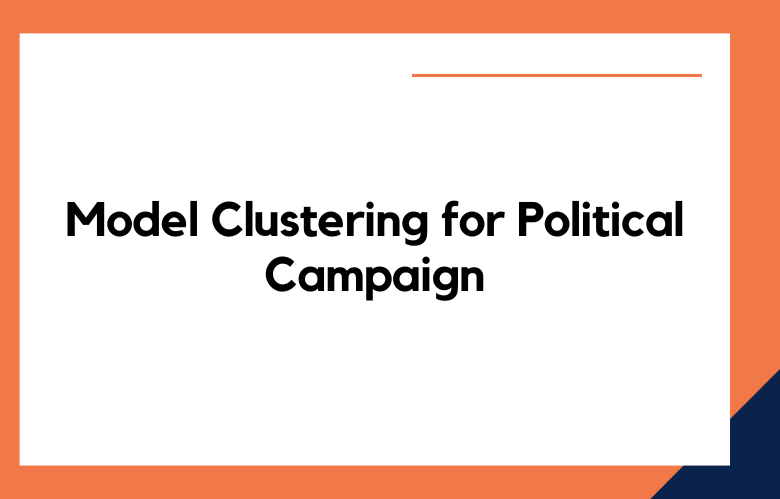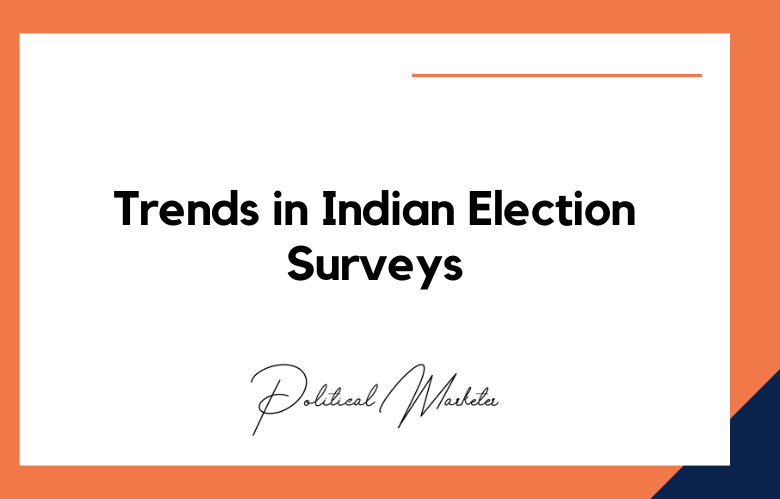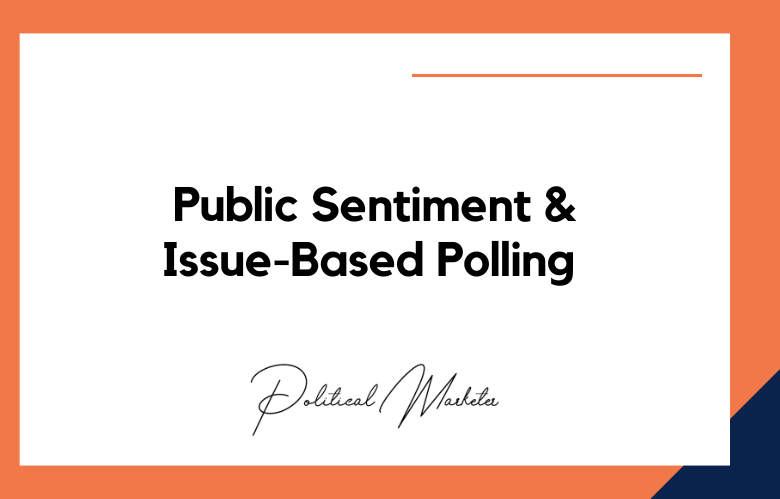Model clustering in political campaigns harnesses sophisticated machine-learning techniques to group voters based on shared characteristics, behaviors, or opinions without predefined categories. This unsupervised learning method provides valuable insights into the electorate, revealing natural voter segments that might not be apparent through traditional analysis.
By understanding these nuanced clusters, campaigns can tailor their messaging, policy emphasis, and outreach efforts to resonate more deeply with specific groups, enhancing engagement and support.
Model Clustering for Political Campaign: Analyzing Voter Behavior
In the fast-paced and data-rich environment of political campaigning, clustering offers a strategic advantage, enabling campaigns to identify key demographics, predict voter turnout, understand regional variations in political preferences, and allocate resources more efficiently.
For example, clustering can highlight a group of undecided voters with similar concerns or reveal a segment of the population particularly receptive to specific campaign messages.
However, the application of model clustering in political campaigns must be cautiously approached, considering the ethical implications of voter segmentation and the potential for reinforcing biases. Ensuring transparency in the clustering process and commitment to inclusive campaigning are essential for responsibly leveraging this powerful analytical tool.
Model clustering represents a cutting-edge approach in political campaigns, offering a data-driven pathway to understanding the electorate’s complex fabric. When used thoughtfully, it can lead to more informed, effective, and engaging campaign strategies that honor the diversity and dynamism of voter preferences.
- Key Takeaways
- Importance of Data in Political Campaigns
- Overview of Machine Learning in Politics
- Key Clustering Algorithms Explained
- K-Means Clustering in Campaign Analysis
- Hierarchical Clustering for Voter Segmentation
- Analyzing Voter Behavior with Clustering
- Political Finance and Clustering Models
- Targeting Messages Using Data Clustering
- Future of Political Campaigns and Clustering
- Final Remarks
- Frequently Asked Questions
- What is the significance of using clustering models in political campaigns?
- How does K-Means clustering contribute to campaign analysis?
- Why is hierarchical clustering valuable for voter segmentation in political campaigns?
- How can data clustering enhance the analysis of voter behavior in political campaigns?
- In what ways do clustering models assist in targeting messages during a political campaign?
Want to revolutionize your political campaign strategy? Dive into the world of model clustering for political campaigns. Uncover how this cutting-edge technique can enhance your targeting precision, optimize resource allocation, and boost voter engagement. By harnessing the power of data analysis and segmentation, you can tailor your messaging with surgical precision, reaching the right audience at the right time.
Stay ahead of the curve by leveraging advanced clustering algorithms to decode voter behavior patterns and preferences. Discover how model clustering can be the game-changer your campaign needs to secure victory.
Key Takeaways
- Utilize data effectively to enhance political campaigns through targeted strategies.
- Implement machine learning algorithms like K-Means and Hierarchical Clustering for voter segmentation and behavior analysis.
- Understand the significance of clustering algorithms in optimizing political finance allocation.
- Tailor campaign messages by leveraging data clustering to reach specific voter segments efficiently.
- Embrace the future of political campaigns by integrating advanced clustering models for enhanced campaign precision and effectiveness.
- Data-driven clustering models offer actionable insights for political campaigns, enabling tailored strategies for maximum impact.
Importance of Data in Political Campaigns
Enhanced Decision-Making
Data is pivotal in political campaigns, providing valuable insights that drive strategic decisions. By leveraging data analytics, campaign managers can identify trends and patterns to make informed choices.
Data enables campaigns to target specific voter groups with tailored messages and initiatives. This targeted approach increases the effectiveness of outreach efforts, maximizing the impact of campaign resources.
Understanding Voter Preferences
Analyzing data is essential for understanding voter preferences and behaviors. By examining demographic information, past voting patterns, and social media engagement, campaigns can craft messages that resonate with their target audience.
Campaigns harnessing data’s power can create personalized communication strategies that speak directly to the concerns and priorities of different voter segments.
Overview of Machine Learning in Politics
Personalized Messaging
Machine learning allows political campaigns to tailor messages based on individual voter preferences and behaviors. By analyzing past interactions, campaigns can create targeted messages that resonate with specific demographics, increasing engagement and support.
Data-Driven Strategies
Understanding the basics of machine learning is crucial for developing effective data-driven campaign strategies. By utilizing algorithms to process and interpret large datasets, campaigns can identify trends, predict outcomes, and optimize resource allocation for maximum impact.
Insights from Data Analysis
Machine learning algorithms are vital in analyzing vast data collected during political campaigns. These algorithms can uncover hidden patterns, sentiments, and correlations within the data, providing valuable insights for decision-making and strategy refinement.
Machine learning in political campaigns enables campaign teams to make informed decisions based on real-time data analysis. By leveraging predictive modeling techniques, campaigns can anticipate voter behavior, effectively target undecided voters, and allocate resources efficiently.
Benefits of Machine Learning
- Improved targeting: Machine learning helps campaigns target specific voter segments with tailored messages.
- Enhanced efficiency: Automated data analysis streamlines campaign operations and resource allocation.
- Predictive capabilities: Algorithms can forecast voter behavior and trends, aiding in strategic planning.
By harnessing the power of machine learning, political campaigns gain a competitive edge by understanding voter sentiments at a granular level. This allows for more personalized communication strategies that resonate with diverse voter groups.
Challenges to Consider
- Data privacy concerns: Collecting and analyzing large amounts of voter data raises ethical questions about privacy protection.
- Bias in algorithms: Ensuring algorithm fairness is crucial to preventing unintentional campaign strategy discrimination.
- Technical expertise: Implementing machine learning requires skilled professionals capable of effectively handling complex algorithms and models.
Key Clustering Algorithms Explained
K-Means
K-Means is a popular algorithm for clustering data points into distinct groups based on similarities. It iteratively assigns each data point to the nearest cluster centroid, minimizing the sum of squared distances.
K-Means is efficient and works well with large datasets, but it requires specifying the number of clusters beforehand. This algorithm is sensitive to outliers and may produce varying results with different initial centroids.
Hierarchical Clustering
Hierarchical CClusteringcreates a tree of clusters where each data point starts in its cluster, and pairs of clusters are merged as one moves up the tree. It does not require specifying the number of clusters in advance.
This algorithm is intuitive and helps visualize the dendrogram, showing how data points are grouped. However, it can be computationally expensive for large datasets due to its time complexity.
DBSCAN
DBSCAN stands for Density-Based Spatial Clustering of Applications with Noise. It groups points that are closely packed while marking outliers as noise. DBSCAN identifies clusters of varying shapes and sizes.
One key advantage of DBSCAN is its ability to detect outliers and handle noise effectively. However, it struggles with clusters of varying densities and requires tuning parameters such as epsilon and minimum points.
Mean Shift
Mean Shift is a non-parametric clustering algorithm that does not require specifying the number of clusters beforehand. It works by shifting each data point towards the kernel density estimation mode.
Mean Shift excels in identifying irregularly shaped clusters and does not make assumptions about cluster shapes. Nevertheless, it can be computationally expensive, especially with large datasets.
K-Means Clustering in Campaign Analysis
Efficient Identification
Implementing k-means clustering allows political campaigns to identify voter segments, streamlining their targeting efforts efficiently. By analyzing vast amounts of data, campaigns can pinpoint distinct groups with similar characteristics.
Tailored Messaging
Utilizing k-means cClusteringempowers campaigns to tailor messages to specific voter groups effectively. This approach ensures campaign messages resonate with each segment’s unique preferences and priorities, enhancing engagement and support.
Simplified Grouping Process
K-means clustering simplifies grouping voters based on shared characteristics, making it easier for campaigns to strategize their outreach. By categorizing voters into clusters, campaigns can focus on strategically addressing each group’s needs and concerns.
Hierarchical Clustering for Voter Segmentation
Detailed Segmentation
Hierarchical cClusteringdivides voters into distinct segments based on similarities, creating a detailed structure for analysis.
Hierarchical clustering provides a hierarchical view of voter groups, allowing campaigns to understand the relationships between different segments.
Targeted Campaigning
Implementing hierarchical clustering enables campaigns to create precise voter profiles, facilitating targeted and personalized campaigning strategies.
Hierarchical clustering helps identify specific characteristics within voter segments, aiding in tailoring campaign messages effectively.
Relationship Understanding
Hierarchical clustering helps campaigns comprehend the connections and associations between various voter clusters.
Analyzing Voter Behavior with Clustering
Insights into Patterns
Clustering data points allows political campaigns to gain insights into voter behavior patterns. By categorizing voters based on similarities, campaigns can effectively tailor their messages and strategies.
Understanding the clusters of voters enables campaigns to identify key issues that resonate with different groups. This knowledge helps in crafting targeted messages that appeal to specific voter segments.
Predicting Trends
Analyzing voter behavior through clustering techniques is instrumental in predicting future voting trends. By examining historical data and current trends, campaigns can anticipate how different clusters of voters might act in upcoming elections.
Campaigns can use these predictions to adjust their messaging, outreach efforts, and policy priorities to align with the evolving preferences of various voter segments.
Effective Strategies
Understanding voter behavior using clustering methods is crucial for developing effective campaign strategies. Campaigns can personalize their communication and engagement tactics by identifying common characteristics within voter clusters.
Tailoring campaign strategies based on distinct voter segments increases the chances of resonating with voters more personally. This approach fosters stronger connections between candidates and the electorate.
Political Finance and Clustering Models
Financial Integration
Integrating financial data with clustering models enables precise allocation of campaign resources based on donor behavior. This strategic approach enhances the effectiveness of resource distribution.
Clustering models help identify donor patterns by grouping donors with similar characteristics. By recognizing these patterns, campaigns can tailor their outreach strategies to maximize fundraising success.
Optimization Strategies
Campaigns benefit from optimizing fundraising strategies through clustering models. By understanding donor segments, campaigns can personalize communication and engagement, leading to higher donation rates.
Analyzing political finance data using clustering models offers insights into spending trends and donation patterns. This analysis aids in developing targeted financial plans for campaign operations.
Targeting Messages Using Data Clustering
Enhanced Communication
Data clustering allows political campaigns to tailor messages to specific voter segments, enhancing communication effectiveness. Campaigns can craft personalized messages that resonate with each group by categorizing voters into clusters based on their preferences and behaviors.
Crafting messages tailored to distinct voter segments increases the relevance of campaign communication. This targeted approach ensures that messages are more likely to capture voters’ attention, leading to higher engagement and increased response rates.
Improved Engagement
They are utilizing data clustering for message targeting, resulting in enhanced voter engagement. When campaigns understand different voter clusters’ unique characteristics and preferences, they can create messages that address specific concerns or interests, fostering a deeper connection with the audience.
By analyzing data through clustering models, campaigns gain valuable insights into voter behavior patterns. These insights enable them to deliver messages that are relevant and compelling to each segment, ultimately driving higher levels of engagement.
Personalized Outreach
Data clustering empowers political campaigns to engage in personalized outreach strategies. By segmenting voters based on demographic information, past voting behavior, and other relevant data points, campaigns can customize their messaging to speak directly to the needs and interests of each group.
Personalized outreach resonates with voters more personally, showing them that the campaign understands their concerns and priorities. This approach fosters trust and loyalty among voters, encouraging them to participate actively in the electoral process.
Future of Political Campaigns and Clustering
Advanced Techniques
Model clustering for political campaigns is the key to unlocking the future landscape of political engagement. By leveraging advanced clustering techniques, campaigns can precisely target specific voter segments based on their preferences and behaviors. This approach enables campaigns to tailor their messages effectively, maximizing voter outreach and engagement.
Innovative Technologies
In political campaigns, embracing innovative clustering technologies is crucial for staying ahead in a rapidly evolving digital landscape. These technologies allow campaigns to analyze vast amounts of data efficiently, identifying patterns and trends that traditional methods may overlook. By utilizing cutting-edge clustering tools, campaigns can gain valuable insights into voter sentiments and preferences.
Strategic Decision-Making
Incorporating clustering methodologies in future campaigns will drive strategic decision-making processes. By segmenting voters into distinct clusters based on various criteria such as demographics, interests, and past behavior, campaigns can tailor their strategies to resonate with each group effectively. This targeted approach enhances campaign messaging and optimizes resource allocation for maximum impact.
Final Remarks
You’ve delved into the realm where data meets politics, uncovering the power of clustering algorithms in shaping modern campaigns. By understanding voter behavior through machine learning, you can revolutionize how messages are tailored, funds allocated, and strategies devised. The future of political campaigning lies in harnessing the insights derived from data clustering to connect with voters on a deeper level and drive impactful change.
As you navigate the evolving landscape of political campaigns, remember that data-driven decisions hold the key to success. Embrace the potential of clustering models to refine your approach, engage with constituents more effectively, and steer campaigns toward meaningful outcomes. Keep exploring the intersection of technology and politics to stay ahead in this dynamic arena.
Call: +91 9848321284
Email: [email protected]
Frequently Asked Questions
What is the significance of using clustering models in political campaigns?
Clustering models help identify voter segments based on behavior, enabling targeted messaging for better engagement and resource allocation.
How does K-Means clustering contribute to campaign analysis?
K-Means clustering groups voters with similar traits, aiding in understanding voter preferences and optimizing campaign strategies effectively.
Why is hierarchical clustering valuable for voter segmentation in political campaigns?
Hierarchical cClusteringorganizes voters into nested clusters, providing insights into diverse voter groups and facilitating personalized campaign approaches.
How can data clustering enhance the analysis of voter behavior in political campaigns?
Data clustering allows for identifying patterns and trends within voter data, leading to informed decisions on messaging, outreach, and resource allocation.
In what ways do clustering models assist in targeting messages during a political campaign?
Clustering models enable the customization of messages tailored to specific voter segments, increasing the relevance and impact of communication strategies.











